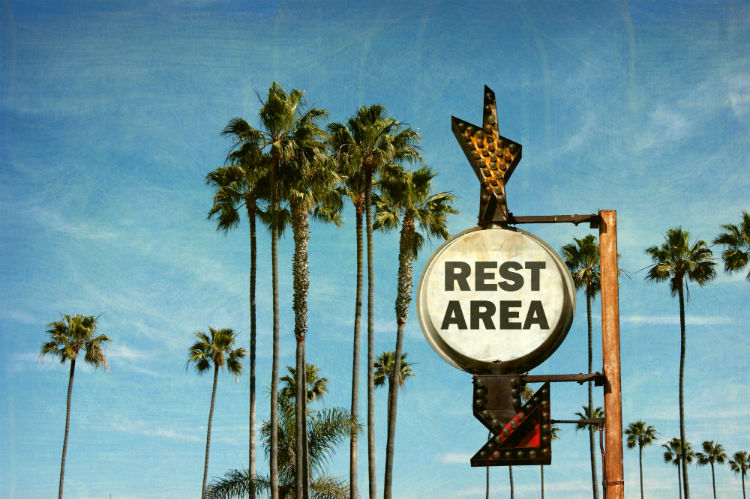Going on a well-deserved vacation or celebrating the holidays with family and friends often involves a certain amount of travel, whether it is by car, plane or train. Unplanned snags, such as inclement weather, mechanical delays and overbooking can be a hassle, but there’s an additional obstacle that roughly half of Americans aged 65 and older have to deal with while traveling: urinary incontinence (UI).
For those with UI, travel can seem impossible. Nonetheless, UI shouldn’t prevent active seniors from getting out of the house, out of town or even out of the country. Whether the challenge is occasional leaks, frequent visits to the bathroom or a complete loss of bladder control, a realistic approach and careful planning can help seniors avoid embarrassing situations.
Use these tips to prevent accidents and ensure you and your loved one are prepared for the unexpected while on the road or in the air.
- Map your route.
When traveling by car, identify freeway exit guides that list rest areas and plan regular stops for bathroom breaks. Google Maps can highlight each rest stop along the route, so you know when and where you can go. Be sure to account for pit stops when timing the drive to ensure you arrive at your destination on schedule.
If traveling by plane, get a feel for the layout of the terminals at the airports you will be using. This knowledge will enable you and your loved one to visit the nearest restrooms just before boarding and immediately upon landing. Keeping an eye out for family or companion care facilities can be extremely helpful if a loved one needs a little more time, privacy or the assistance of another person with incontinence care. - Dress for the trip.
This tip goes beyond selecting an outfit to travel in. Yes, comfortable clothing that is easy to change is a must, but it’s also recommended to wear some sort of incontinence protection. Depending on the nature of one’s UI, wearing a liner, absorbent pad or disposable brief is a good idea, especially for longer trips. It’s wise to plan for the worst and hope for the best. - Limit liquid intake before and during air travel.
Changes in cabin pressure and tight seat belts can put extra pressure on the bladder, especially if it’s full. Not to mention airplane bathrooms are tiny and the fasten seatbelt sign is notoriously unpredictable. Limiting fluids is more feasible for short flights, but because air travel is already dehydrating, discuss using this approach on longer flights with a doctor.
If you or your loved one can’t pass up complimentary in-flight beverages, at least avoid diuretics such as soda and coffee. Plain old water is the most bladder-friendly choice. Consider discreetly notifying a flight attendant of a loved one’s UI before takeoff as well. This can be helpful should the plane get delayed. - Pack accordingly.
This includes a “Plan B” bag. Pack a bag to keep handy during travel that contains extra supplies, such as a change of clothes, extra incontinence products and a few plastic bags for containing soiled clothing and disposing of used products discretely. This not only helps if an accident occurs but can also be a lifesaver if the airline loses one’s checked baggage.
When it comes to packing main bags, be sure to include plenty of extra incontinence products, especially if it is uncertain whether preferred types or brands will be available for purchase at the destination. For overnight stays, include disposable underpads (also known as chux) to ensure mattresses and other furniture stay clean and dry. - Always reserve an aisle seat if possible.
An aisle seat is the most convenient option and can help avoid embarrassment when it comes to waking up fellow passengers and asking them to move for each bathroom break. While it may not be pleasant to sit near a lavatory on a flight, it does provide quick and easy access to the facilities. This is much simpler than trying to keep tabs on whether a restroom at either end of the plane is vacant or occupied.
If you book with an airline that doesn’t assign seats, consider splurging for early check-in capabilities. This will guarantee a spot at the front of the boarding line and increase the likelihood of snagging a convenient seat. - Talk to a doctor about medication.
Prescription medications are available to help with the symptoms of overactive bladder (OAB) and urge incontinence. According to urologists, some of these drugs can take a few weeks to reach their full therapeutic effect, so be sure to discuss this option with a doctor well in advance of the departure date. - Consider catheterization.
There are many different types of catheters that may be worth discussing with a doctor prior to a trip. Some are only inserted to empty the bladder and then removed, while others can be left in for a few days or weeks. Another noninvasive option for men is a condom catheter that is worn externally. Consulting with a physician about catheterization options may provide an additional tool for managing incontinence with dignity while away from home. Again, it is important to address this well in advance so that seniors and their caregivers are able to learn how to use this equipment properly and grow comfortable with the new routine. - Learn how to ask, “Where is the restroom?”
This is vitally important when traveling to foreign countries. Brush up on this and a few other basic phrases before going abroad to ensure your trip is enjoyable and goes smoothly. Here are a few to get you started:
French: Où sont les toilettes s’il vous plaît? (Where is the toilet, please?)
Spanish: Perdóneme ¿Dónde está el baño? (Excuse me, where is the bathroom?)
German: Wo ist die Toilette, bitte? (Where is the toilet, please?)
Arabic: Ayna Al Hammam? (Where is the bathroom?)
